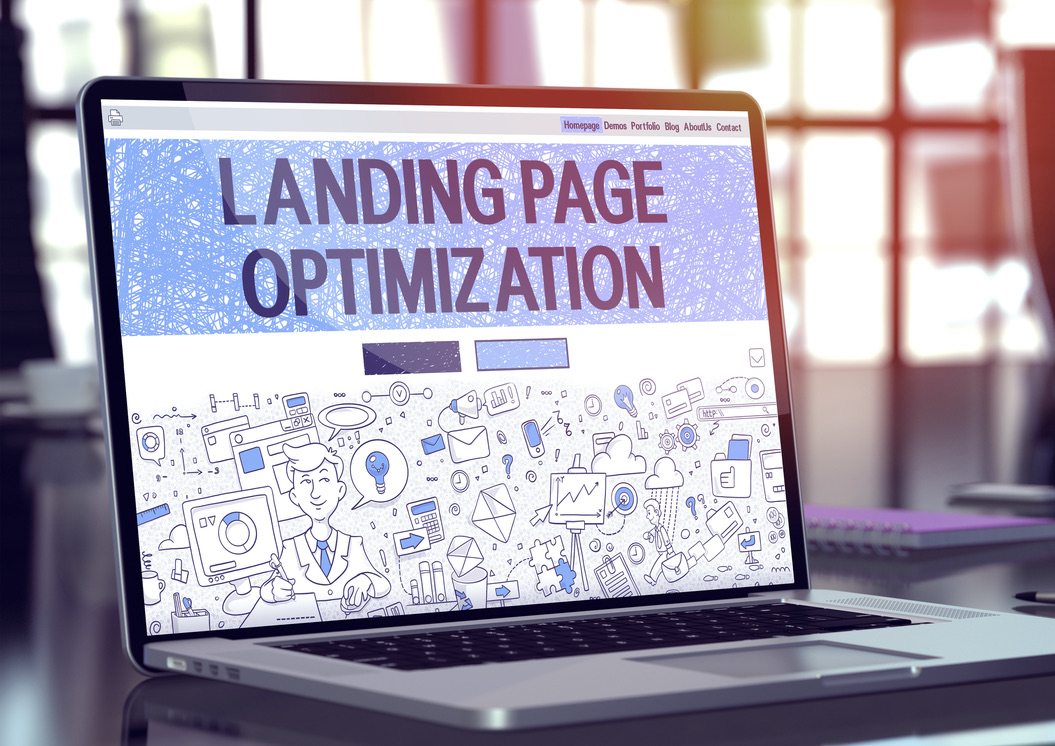If you’ve been in marketing long enough, you’ll know that the main job of landing pages is to drive conversions. Whether it’s a landing page for asking for email addresses to sign up for a newsletter or a landing page offering a free trial for a piece of software, the goal of the page is the same, to get as many users visiting the page to convert as possible.
However, to get enough conversions from your landing pages, you need to be driving enough traffic to them, to begin with. You won’t be able to get conversions through your landing page if no one can find it. This means that whenever you create a landing page, you need to strike a balance between making sure the copy and layout of the page are enticing enough for your visitors to want to convert, but also making sure that the page is optimized for search engines.
In this article, we’ll lay out the steps to take to achieve this balance for every landing page you create.

What is an SEO Landing Page?
An SEO landing page focuses on targeted keywords and is optimized for search engines by focusing on features that make the page, particularly appealing to search engine algorithms that decide whether the landing page is useful to searchers.
Landing pages that are optimized for search engines consistently attract more organic traffic, which gives the brand producing the landing page a higher chance of converting more visitors. Aside from being optimized for search engines, great landing pages all have these four things in common:
Design – a good landing page should be built with the end user’s experience in mind and clearly guide the user towards the CTA on the page.
Persuasive copy – the copy used on a landing page should position the brand/business or the asset they are promoting as the solution to the problem a user is experiencing and educate the user on this problem, with the copy persuading the user to move down the page to the CTA.
Call to action (CTA) – the CTA on a page should act as a clear prompt for the next step as a user should take.
Form – the form offers the opportunity for the user to submit their details in exchange for something, e.g., a free ebook teaching the visitor how to save money, a free trial for a piece of software, or a newsletter sign-up.
How to create and optimize a landing page for SEO
#1 Identify relevant keywords
Determining which keywords you use to target is arguably the most important part of the optimization process. Before you start your keyword research make sure you have a deep understanding of your industry, your competitors, and your target customer.
Start your keyword research by creating a list of terms that are relevant to the topic of the page you are creating and think about what combinations of these terms people will be using in their searches, these combinations are known as long-tail keywords, and they tend to be easier to rank for than single keywords or shorter keyword phrases due to less competition.
Keep an eye on the search intent of the long-tail keywords you come across as well, particularly those long-tail keywords that suggest a transactional search intent. If you can successfully target long-tail search terms where the search intent is transactional, you stand a good chance of bringing in highly-relevant traffic looking to make a purchase to your landing page.
Once you’ve identified your keywords, you can start thinking about where to place them within your content. Keyword research and SEO tools such as Ahrefs and SEMRush are great for helping you identify your keywords.
#2 Place your keywords strategically throughout your landing page
The keywords that you choose to target should be placed strategically throughout your page. Try and make sure you use your primary keyword within your title and within the first 150 words of your landing page content. Any other keywords that you’re targeting should be used naturally throughout your landing page.
Don’t try to stuff keywords when focusing on content development; yes, you’re trying to make your page rank, but remember you’re writing for humans, not algorithms. Keyword stuffing is also unpopular with Google’s algorithm and can even lead to your website being penalized by the search engine.
#3 Keep an eye on the URL
When it comes to SEO, every small detail counts, even the URL you use for your landing page. It’s best practice to keep your URL between 50-65 characters. Try and keep your URL topical to your page.
The CMS you publish may also allow you to publish your landing page to your own domain or to host it temporarily on the domain of the landing page service provider you’re using.
For example, Instapage states ‘when you build a page in Instapage, you have the option to publish it to your custom domain (www.yoursite.com/yourlandingpage), or keep the “.pagedemo.com” on the end of your URL and let us host it for you temporarily (yourbrand.pagedemo.com).’ As the article goes on to state, while it may be tempting to let the service provider handle the hosting, from an SEO perspective, this isn’t recommended. Search engines want to be able to identify your domain in the URL.
As well as pleasing the search engines, publishing your landing page on your own domain also helps keep your branding consistent and gives your page a rankings boost when someone searches for the keywords you’ve used on your page.
#4 Optimize On-Page SEO
It’s not just keywords you need to keep in mind when you’re creating a landing page. You need to keep on-page SEO principles and best practices in mind so search engines can effectively read and analyze the content on your page.
Make sure you have the following on-page elements optimized:
Title tag – Include your primary keyword in your title tag and try to keep your title relatively short; under 60 characters is optimal
Meta description – Make sure your meta description is clear, describes/summarizes the content on your page, and tells the reader what they will find on the landing page
Headings – You should organize the content on your page using H2 and H3 headers. Also, include an H1 heading that matches the title of your page
Images and videos – Placing images and videos on your landing page can help show search engines that the content on the page is valuable. You should also make sure that you use a clear description in your alt tag, title, and file names of any images or videos you use
Internal links – Like with any piece of content, you should place any relevant internal links within your landing page content using any relevant anchors that you can
#5 Build good backlinks
Backlinks consist of gaining links from other websites back to your own site, and building backlinks to your website will help increase your entire site’s ranking within search engines along with helping the ranking of your landing page.
Some of the most common link building methods are:
- Creating high-quality, original content
- Having a good follow to no follow ratio
- Produce guest posts for popular websites within your niche
- Broken link building
- Creating “linkable assets” such as infographics
- Reaching out to or hiring influencers who can share your content
#6 Check your page speed
No one likes a slow web page, and you should aim for every page on your site to load as quickly as possible.
Research into page loading speeds from SEMRush found that if a web page loads in under 2.9 seconds, then that page’s loading time is faster than 50% of pages on the web. If a web page loads in 1.7 seconds or less, then that page is quicker than 75% of pages on the web.
You can check the speed of your landing page using Google PageSpeed Insights. Simply put the URL into the search bar, hit ‘Analyze’, and Google will give your web page a performance score out of 100 and recommendations on how you can improve your pages speed and overall performance.
Here are some quick implementable tips to improve the speed of your landing page and your overall website:
Invest in a high-quality website hosting service
Compress and optimize the images you use on your website
Keep the plugins on your site up to date and remove any unnecessary plugins
Enable cache browsing and cache your web pages
#7 Make sure the landing page is mobile-friendly
Over 50% of all web traffic comes from mobile devices, so you need to make sure that your landing page works well on mobile devices to capture the amount of traffic that comes from mobile devices.
Many landing page-building tools will show you a preview of how your landing page will look on a mobile device before you publish it or allow you to publish landing pages that are specific to mobile devices. You can also use Google PageSpeed Insights to test the loading speed of a landing page on a mobile device.
Other tips to consider when you’re creating mobile-friendly landing pages are:
Keep the copy on your page short and sweet
Place your CTA towards the top of the landing page
Don’t overwhelm your users with too many images or videos
Make sure your page loading speed is optimized
Prioritize navigation and make your landing page as simple to use for the user as possible
#8 Actionable Landing Pages
Whether you own a blog, are selling digital products, physical products, or have an SaaS company, each page should have a job and only one at that. This means you make sure every page is designed with a specific purpose in mind.
You want each page to drive a specific action from your audience. This mainly comes down to making it clear to your audience what their next move should be and making it incredibly simple for them to do it.
Wrapping it up
Optimizing a landing page for search engines is essential for it to show up in search rankings. The steps for getting your landing page to rank are very similar to the steps that are required for a piece of content to rank, so if you already have content ranking well on your site, you should have some idea of how to get your landing pages to rank well in search.
Also, try to make sure your website is performing well before you publish and optimize your landing pages. When your entire website is performing well you’ll, your landing pages, once optimized for search engines, will inevitably rank better and bring in more traffic. Get in touch with our web designers and SEO Agency experts for all your landing page optimisation needs.




